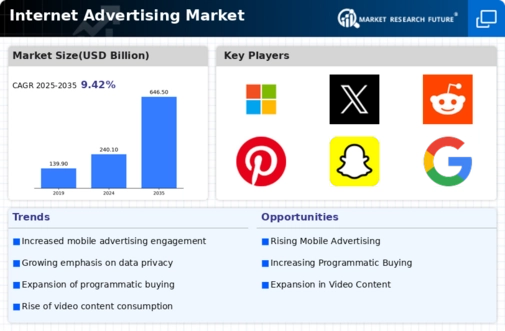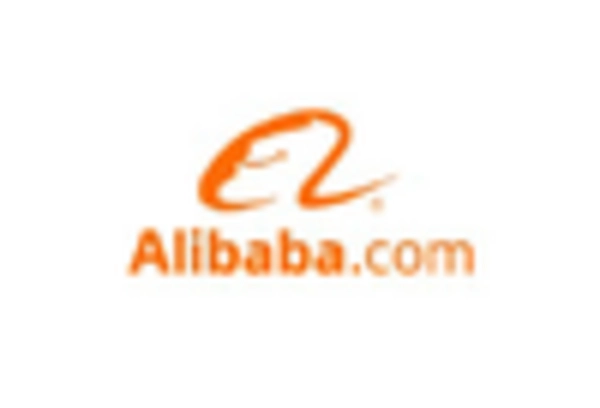Rise of Mobile Advertising
The proliferation of smartphones and mobile devices has transformed the Internet Advertising Market. As of 2025, mobile advertising accounts for a substantial portion of total digital ad spending, with estimates suggesting it could reach over 70 percent of the market. This shift is driven by the increasing time consumers spend on mobile applications and websites. Advertisers are adapting their strategies to optimize for mobile platforms, utilizing formats such as in-app ads and mobile video. The Internet Advertising Market is witnessing a surge in mobile-first campaigns, which are designed to engage users effectively on their devices. This trend indicates a fundamental change in how brands connect with their audiences, emphasizing the need for responsive design and mobile-friendly content.
Growth of Video Advertising
Video content continues to dominate the Internet Advertising Market, with its share of digital ad spending steadily increasing. By 2025, video advertising is projected to account for nearly 50 percent of all online ad expenditures. This growth is attributed to the rising popularity of video-sharing platforms and social media channels that prioritize video content. Advertisers are leveraging this trend by creating engaging video ads that capture consumer attention. The Internet Advertising Market is evolving to include innovative formats such as live streaming and interactive video ads, which enhance viewer engagement. As consumers increasingly prefer video over static content, brands are compelled to invest in high-quality video production to remain competitive in this dynamic landscape.
Adoption of Data Privacy Regulations
The Internet Advertising Market is currently navigating a landscape shaped by increasing data privacy regulations. As governments implement stricter guidelines regarding consumer data usage, advertisers are compelled to adapt their strategies to comply with these regulations. This shift may lead to a greater emphasis on transparency and ethical advertising practices. By 2025, the impact of these regulations is likely to reshape how data is collected and utilized in advertising campaigns. The Internet Advertising Market may see a rise in consent-based marketing approaches, where consumers are more informed about how their data is used. This trend suggests that brands will need to prioritize consumer trust and privacy in their advertising efforts.
Emergence of Programmatic Advertising
Programmatic advertising is revolutionizing the Internet Advertising Market by automating the buying and selling of ad space. This technology allows advertisers to target specific audiences with precision, utilizing data analytics to optimize campaigns in real-time. As of 2025, programmatic ad spending is expected to surpass traditional ad buying methods, indicating a significant shift in how advertising is conducted. The Internet Advertising Market is benefiting from increased efficiency and effectiveness, as programmatic platforms enable advertisers to reach their desired demographics more accurately. This trend suggests a growing reliance on data-driven strategies, which may lead to more personalized and relevant advertising experiences for consumers.
Influence of Social Media Advertising
Social media platforms have become pivotal in the Internet Advertising Market, providing brands with unique opportunities to engage with consumers. As of 2025, social media advertising is projected to account for a significant share of digital ad spending, driven by the vast user base and the ability to target specific demographics. Advertisers are increasingly utilizing social media for brand awareness, customer engagement, and direct sales. The Internet Advertising Market is witnessing a shift towards influencer partnerships and user-generated content, which enhance authenticity and trust. This trend indicates that brands are recognizing the value of social media as a critical channel for reaching and influencing potential customers.


















Leave a Comment